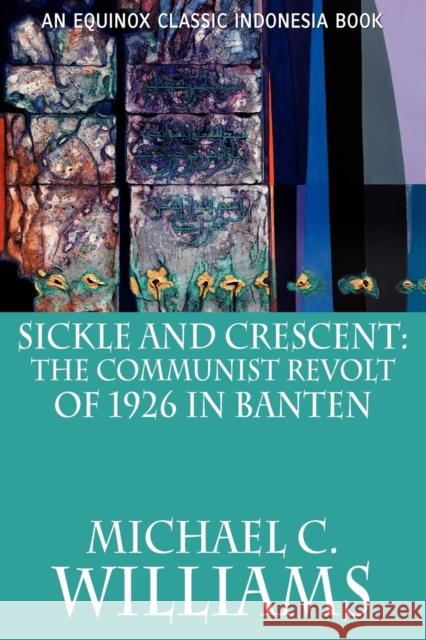Sickle and Crescent: The Communist Revolt of 1926 in Banten » książka
Sickle and Crescent: The Communist Revolt of 1926 in Banten
ISBN-13: 9786028397537 / Angielski / Miękka / 2009 / 116 str.
"Alongside the crescent, the star of the Soviets will be the great battle emblem..." - Tan Malaka Twice in this century the people of Banten have risen in revolt against those they considered to be their oppressors. On both occasions the leadership of the revolts was largely religious and yet at the same time announced to all that it was Communist. The revolutionary leadership successfully portrayed their ideology as both past and future. In 1926 and again in 1945, revolt was to be the harbinger of freedom from colonial rule and the dawn of a new era of social justice and prosperity. These are familiar themes of Communist-inspired revolt, but the Bantenese revolutionaries also delved deep into their past history to proclaim that the advent of Communist revolt would also lead to the restoration of the Sultanate of Banten. The Banten region illustrates strikingly that the movement from "archaic" to modern forms of political protest is not lineal but dialectical. As Geertz has perceptively remarked, "there is in such matters no simple progression from 'traditional' to 'modern, ' but a twisting, spasmodic, unmethodical movement which turns as often toward repossessing the emotions of the past as disowning them." This dialectical connection between future, present, and past was evident not only in the ideology of the two main revolts, but also in the social composition of the revolutionary leadership. In both uprisings descendants of the former Sultans of Banten, called tubagus, and others holding noble titles they had borne from old, played a prominent role. Indeed one of the very first actions of the Indonesian Communist Party (PKI) branch in 1925 was to demand compensation and pensions for all who bore the title tubagus from a sultanate abolished nearly a century before. They rubbed shoulders in the revolutionary leadership with other traditional leaders of peasant revolt, such as the Islamic teachers, the ulama, and the local men of violence, the jawara, but also with more "modern" revolutionaries such as artisans, printers, journalists, and trade unionists. In short, the uncompromising insistence on modernity that was to be a hallmark of the PKI after 1951 was certainly not a prominent feature of the movement in the 1920s or in 1945.
"Alongside the crescent, the star of the Soviets will be the great battle emblem..." - Tan MalakaTwice in this century the people of Banten have risen in revolt against those they considered to be their oppressors. On both occasions the leadership of the revolts was largely religious and yet at the same time announced to all that it was Communist. The revolutionary leadership successfully portrayed their ideology as both past and future. In 1926 and again in 1945, revolt was to be the harbinger of freedom from colonial rule and the dawn of a new era of social justice and prosperity. These are familiar themes of Communist-inspired revolt, but the Bantenese revolutionaries also delved deep into their past history to proclaim that the advent of Communist revolt would also lead to the restoration of the Sultanate of Banten.The Banten region illustrates strikingly that the movement from "archaic" to modern forms of political protest is not lineal but dialectical. As Geertz has perceptively remarked, "there is in such matters no simple progression from traditional to modern, but a twisting, spasmodic, unmethodical movement which turns as often toward repossessing the emotions of the past as disowning them." This dialectical connection between future, present, and past was evident not only in the ideology of the two main revolts, but also in the social composition of the revolutionary leadership. In both uprisings descendants of the former Sultans of Banten, called tubagus, and others holding noble titles they had borne from old, played a prominent role. Indeed one of the very first actions of the Indonesian Communist Party (PKI) branch in 1925 was to demand compensation and pensions for all who bore the title tubagus from a sultanate abolished nearly a century before. They rubbed shoulders in the revolutionary leadership with other traditional leaders of peasant revolt, such as the Islamic teachers, the ulama, and the local men of violence, the jawara, but also with more "modern" revolutionaries such as artisans, printers, journalists, and trade unionists. In short, the uncompromising insistence on modernity that was to be a hallmark of the PKI after 1951 was certainly not a prominent feature of the movement in the 1920s or in 1945.











